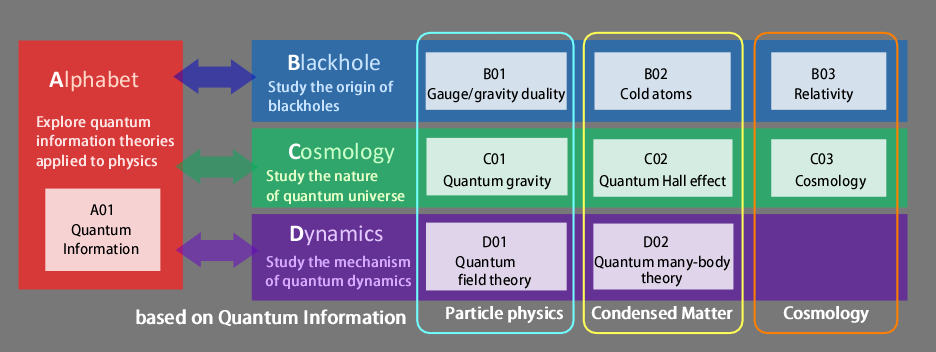Conventionally, physics has explained the laws of nature using time, space, and matter as its basic building blocks. However, in the extreme situations in nature (which we call the “extreme universe” in our area), due to the strong quantum nature of the target physical systems, the degrees of freedom of space, time, and matter themselves fluctuate enormously, and existing theoretical approaches in physics face difficulties. This extreme universe refers to the three limits in nature: the limit of space, the limit of time, and the limit of matter as follows:
1 Quantum Theory of Black holes [the limit of space]
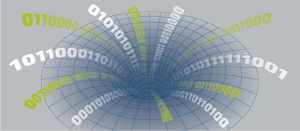
2 Quantum Theory of Cosmology [the limit of time]
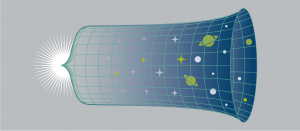
3 Dynamics of Quantum Matter [the limit of matter]
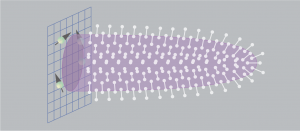
However, as soon as the field of "quantum information" emerged in the 21st century, this new way of looking at things began to bring dynamic changes to physics. Quantum information is the basis of quantum computation and quantum communication, which are expected to be the key technologies of the next generation. It is a new way of thinking that provides an understanding and a systematic control method of quantum entanglement, which means the correlation between qubits, the smallest unit of information in the microscopic world. By treating the information carried by qubits, which can be called the "limit of information," as the basic building blocks of the natural world, we can break away from the conventional picture of time, space, and matter, and expect to construct the ultimate laws of physics.
Gauge-gravity duality (also called AdS/CFT or Maldacena duality), which was discovered in string theory, relates quantum gravity to theory of quantum matter in an equivalent way. Moreover, in this duality, entanglement entropy, which measure the amount of quantum entanglement, becomes equal to an area of a surface in the gravitational spacetime (called Ryu-Takayanagi formula). These imply the new idea that the universe in gravitational theory can be regarded as an accumulation of countless quantum information, which has attracted worldwide attention. On the other hand, such a collection of bits of quantum information provides a high-precision numerical analysis method of quantum matter, called a tensor network. In this research area, we aim to clarify the extreme universe by integrating quantum information and physics of elementary particles/strings, condensed matter, and cosmology.
Although the length scales covered by each problem are very different, it is expected from the viewpoint of quantum information that the laws of physics can be understood in a unified manner, all as a collection of qubits. Physics is composed of individual fields corresponding to various scales, as exemplified by the Ouroboros snake. In this research area, we will change the topology of physics from the donut-shaped (torus-shaped) structure of conventional physics to a new sphere-shaped physics by taking into account ideas from quantum information, and thereby approach the problem of the extreme universe.
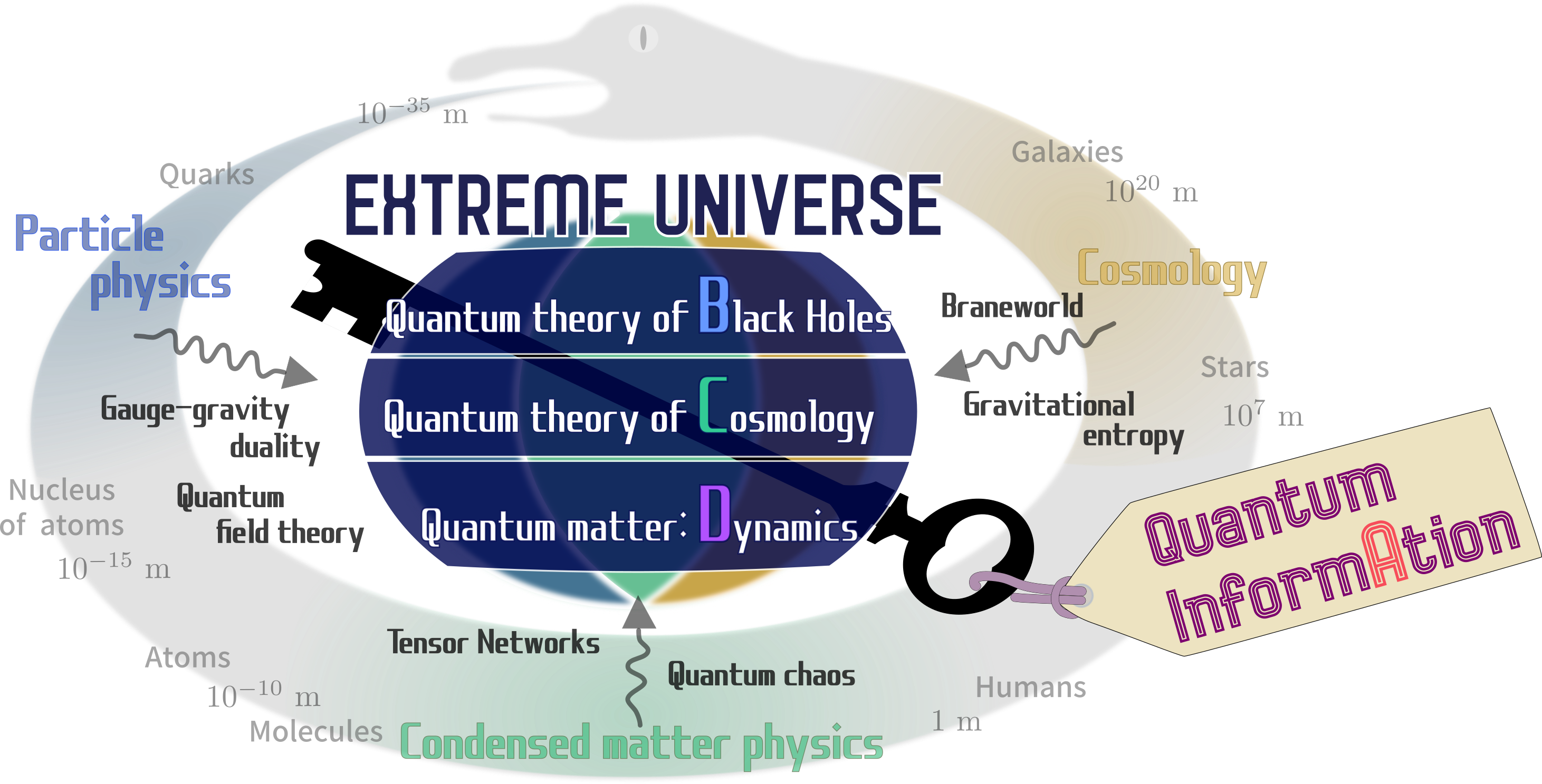
Structure of Research Groups
This area consists of nine planned research groups as shown in the figure below, which are roughly divided into A, B, C, and D groups according to their research goals:
- Group A (A01): Fundamental research on quantum information theory for physics
- Group B(B01, B02, B03): Quantum theory of black holes
- Group C(C01, C02, C03): Quantum theory of cosmology
- Group D(D01,D02): Dynamics of quantum matter
Moreover, groups B, C, and D will be subdivided into research projects that will be responsible for approaches from particle/string theory (01), condensed matter physics (02), and cosmology (03). For more details, please refer to the pages of each of the nine planned research projects.
In this way, this area aims to promote fusion of disciplines and make breakthroughs by successfully intertwining both “warp threads” (i.e. connections between conventional research fields) and “weft threads” (i.e. common research goals). In addition to theoretical research, another feature of this area is to conduct experimental verification that mimics black holes and the creation of the universe through experiments of cold atoms (B02) and the quantum Hall effect (C02) using comparatively compact equipment. Together with complementary research projects based on call for research proposals, starting in FY2022, we will develop the interdisciplinary research subjects between quantum information and physics.
